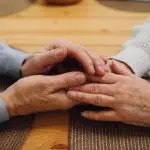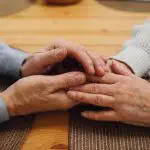Do you enjoy quilting and want to learn more about the materials you use? If so, you may have heard of needle punched batting.
This popular quilting material is made through a unique manufacturing process that creates a durable and versatile material for your projects.
Needle punched batting is created by punching millions of tiny needles through layers of fibers, bonding them together to create a cohesive and sturdy material.
The fibers used can vary, from natural fibers like cotton and wool to synthetic materials like polyester and bamboo.
This process results in a batting that is free of lumps and bumps, creating a smooth surface for your quilt top to rest on.
Table of Contents
Definition of Needle Punched Batting
If you’re looking for a batting material that’s durable, easy to work with, and provides excellent insulation, then you should definitely consider needle punched batting! This type of batting is made by punching thousands of tiny needles through layers of fibers, which entangles and interlocks them together.
The result is a strong and stable batting material that won’t shift or bunch up inside your quilt or other project. One of the great things about needle punched batting is that it comes in a variety of thicknesses and lofts, so you can choose the perfect option for your specific project.
For example, if you want a fluffy and warm quilt, you might opt for a high-loft batting. On the other hand, if you’re looking for a thin and lightweight batting for a summer quilt, you could choose a low-loft option. Another advantage of needle punched batting is that it’s easy to work with.
Unlike some other types of batting, it doesn’t beard or shed fibers, which means you won’t have to constantly clean your machine or workspace. Plus, it’s easy to cut and shape to fit your project, and it won’t fray or tear.
Overall, if you’re looking for a reliable and versatile batting material, needle punched batting is definitely worth considering!
The Manufacturing Process
You might be surprised to learn that the process of creating needle punched batting is quite fascinating. Here’s a breakdown of how it’s made:
-
Blending: The first step is to blend fibers of different types and lengths to create a uniform mixture. This mixture is then carded to align the fibers and remove any impurities.
-
Needle punching: The blended and carded fibers are then fed through a machine that uses thousands of needles to punch them together. This process not only compresses the batting but also creates tiny needle holes that allow for better breathability and moisture wicking.
-
Finishing: After needle punching, the batting is then heat-bonded or resin-bonded to ensure that the fibers remain in place. It is then rolled and packaged for sale.
Overall, needle punched batting is a durable and versatile product that can be used in a variety of applications, including quilting, home décor, and insulation. Its unique manufacturing process makes it an excellent choice for those looking for a breathable and moisture-wicking material.
Types of Fibers Used
The variety of fibers utilized in the production process of needle punched batting will leave you amazed and impressed. The fibers used can range from natural to synthetic, each with their own unique properties and advantages. Here is a table showcasing some of the most commonly used fibers in needle punched batting:
| Fiber | Properties | Advantages |
|---|---|---|
| Cotton | Soft, breathable, absorbent | Natural, easy to work with |
| Wool | Warm, durable, moisture-wicking | Naturally fire-resistant, hypoallergenic |
| Polyester | Strong, lightweight, non-allergenic | Resistant to mold, mildew, and insects |
| Bamboo | Soft, breathable, moisture-wicking | Sustainable, eco-friendly |
As you can see, there is a fiber for every need and preference when it comes to needle punched batting. Some manufacturers may even combine different fibers to create a batting that has the best of both worlds. For example, a blend of cotton and polyester can provide the softness of cotton with the added strength and durability of polyester.
When choosing a needle punched batting, it is important to consider the fiber content and how it will affect the end result of your project. Whether you prioritize sustainability, comfort, or durability, there is a fiber out there that will meet your needs. With so many options available, it’s no wonder that needle punched batting has become such a popular choice for quilters and crafters alike.
Uses in Quilting Projects
Quilting enthusiasts, imagine how your next project could benefit from the versatility and flexibility of needle punched batting. This type of batting is perfect for a variety of quilting projects, including bedspreads, wall hangings, and even clothing.
It’s made by punching fibers through a layer of fabric with needles, creating a dense and durable material that’s perfect for quilting. One of the best things about needle punched batting is that it doesn’t require any pre-washing, as it’s already pre-shrunk. This makes it easy to work with and saves you time and effort.
Additionally, the dense structure of needle punched batting makes it ideal for machine quilting, as it provides excellent stability and support. Another advantage of needle punched batting is that it’s available in a variety of thicknesses and weights, allowing you to choose the perfect batting for your project.
Whether you want a lightweight batting for a summer quilt or a thicker batting for a cozy winter quilt, there’s a needle punched batting that’ll meet your needs. So, if you’re looking for a versatile and durable batting for your next quilting project, consider using needle punched batting and see the difference it can make.
Advantages of Needle Punched Batting
Imagine having a batting that’s already pre-shrunk, making it easy to work with and saving you time and effort. This is one of the advantages of needle punched batting.
The batting fibers are tightly intertwined, creating a durable and long-lasting quilt. This type of batting is also great for machine quilting, as the needle easily passes through the material.
Another advantage of needle punched batting is its ability to maintain its shape and loft. This is because the fibers are needle punched multiple times, creating a stable and consistent texture. It also doesn’t require a lot of extra care or maintenance, making it ideal for those who don’t have a lot of time to devote to quilting.
Needle punched batting provides excellent insulation, making it perfect for quilts that are meant to keep you warm. It also has a natural drape, giving your quilt a beautiful finish.
Overall, the advantages of needle punched batting make it a popular choice among quilters who’re looking for a high-quality batting that’s easy to work with and produces great results.
How to Choose the Right Needle Punched Batting
When choosing the perfect needle punched batting for your quilt, it’s important to consider factors such as loft, fiber content, and intended use. Here are some tips to help you choose the right one:
-
Consider the loft: The loft refers to the thickness of the batting. If you want your quilt to have a puffy or fluffy look, go for a batting with higher loft. If you prefer a flatter look, choose a batting with lower loft. Keep in mind that the loft can affect the warmth of the quilt, so choose accordingly.
-
Think about the fiber content: Needle punched batting can be made from a variety of fibers, including cotton, wool, polyester, and blends. Each fiber has its own unique properties and advantages. For example, cotton batting is breathable and easy to work with, while wool batting is warm and has a natural resilience. Think about what you want your quilt to feel like and choose a batting that matches your preferences.
-
Consider the intended use: Finally, consider what kind of quilt you’re making and how it will be used. If you’re making a baby quilt, you’ll want to choose a batting that is soft, hypoallergenic, and easy to wash. If you’re making a decorative throw, you might want to choose a batting that has a higher loft and gives your quilt a luxurious feel. Whatever your intended use, make sure you choose a batting that will meet your needs.
With these tips in mind, you’ll be able to choose the perfect needle punched batting for your quilt. Remember to consider the loft, fiber content, and intended use, and you’ll end up with a quilt that looks and feels just the way you want it to. Happy quilting!
- Tetron Fabric for Apparel: Style and Comfort Tips - June 17, 2025
- Tetron Fabric for Crafts: Creative Project Ideas - June 17, 2025
- Tetron Fabric for Upholstery: Durability and Design Tips - June 17, 2025





